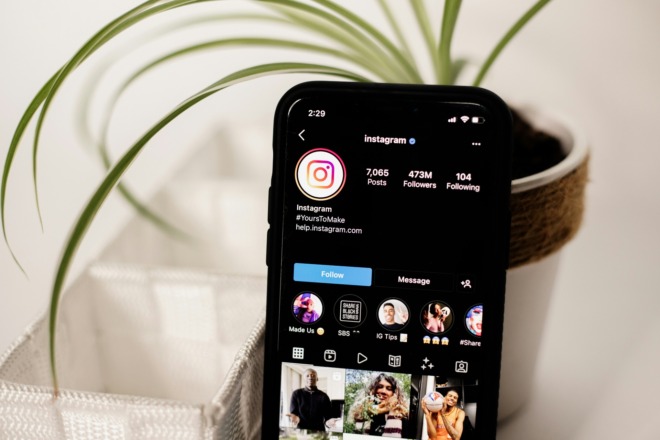Imagine you’re a store owner with a diverse range of products, and you have all sorts of customers dropping by — some are deal-seekers, while others crave exclusivity. What if you could greet each one with offers and products that speak directly to their wants and needs? That’s precisely what Shopify Audiences can do for you.
With this neat feature, you’re not just throwing darts in the dark — you’re making calculated moves to increase conversion rates and build customer loyalty. It also increases the likelihood of turning those window shoppers into regular customers. Keep reading to find out how.
What are Shopify Audiences?
Think of Shopify Audiences as your virtual organizer. It helps you sort your customers into different groups or “audiences” based on what they buy, how often they shop or where they reside. It’s like putting your customers into different rooms based on what interests them the most.
When you know who your customers are, you can talk to them in a way that resonates. It means showing them products they’re likely to buy or sending them personalized offers. So, instead of a one-size-fits-all approach, you can tailor your marketing to fit like a glove, which often leads to more sales.
Importance of Segmentation
Audience segmentation is like organizing customer lists into smaller, more focused groups. Doing this helps you convey the appropriate message to the right people, making your marketing more effective.
How does this boost sales? Segmented email campaigns have shown a 760% increase in revenue. When you tailor your message to a specific audience, you’re more likely to hit the mark. People are more apt to buy when they feel you’re speaking directly to them.
For example, imagine you own a clothing store, and you segment your audience into two groups — one for people who have bought casual wear and another for those who have bought formal wear.
You can then send targeted promotions to each group, like a discount on t-shirts to the casual wear group and a sale on suits to the formal wear group. It increases the chances of making a sale because you’re offering products that genuinely interest each audience.
How to Create Shopify Audiences
Creating an audience in Shopify is a straightforward process, and here’s how to do it step-by-step:
- Log in to your Shopify account and navigate to the “Customers” section.
- Choose the “Create Audience” option.
- They will prompt you to set up conditions or filters, like “purchased in the last 30 days” or “lives in a specific location.”
- After setting your conditions, give your audience a name.
- Hit “Save,” and you’re all set!
When creating these groups, be specific but not too narrow when setting the conditions — you don’t want to miss out on potential customers. Regularly update your audiences, too. As customer behavior changes, your segments should reflect that.
Also, knowing your ideal customer demographic lets you tailor your marketing to perfection.
Suppose you know that some of your audience is interested in eco-friendly products. In that case, you can create targeted email campaigns or social media ads showcasing your sustainable items. So, understanding your audience makes your strategies more relevant and far more effective.
Techniques for Targeting
Using Shopify Audiences for email marketing is like having a secret weapon. Here’s how to wield it:
- Start by exporting the specific audience you’ve created in Shopify to your email marketing platform.
- Craft an email that speaks directly to this group’s interests or needs.
- Send it out and watch engagement soar.
Consumers are more likely to open a segmented email campaign than non-segmented messages. So, you’re not just sending emails — you’re sending the right emails to the right people.
Likewise, if someone visited your site but didn’t make a purchase, don’t let them forget you. Use your Shopify Audiences to create custom audiences on social media platforms. Then, show these audiences ads for the products they viewed but didn’t buy. Retargeting can yield a 10x higher click-through rate than regular display ads.
In addition, offering personalized discounts to specific audiences can significantly boost conversion rates. So, personalization adds that extra allure that often leads to a sale, whether it’s a birthday discount or a special offer for frequent shoppers.
Scaling Your Strategy
Building initial success with Shopify Audiences starts with monitoring. Keep an eye on key performance indicators and when you spot a winning strategy, lean into it. Initial success often comes from fine-tuning — even minor adjustments can yield significant results.
And as your business grows, so should your audience segments. Consider introducing more nuanced categories, like separating frequent buyers into “high-spenders” and “consistent shoppers.”
Also, contemplate seasonal trends or introduce geographic targeting for new locations you’re venturing into. According to McKinsey, companies that leverage customer behavior data to generate behavioral insights outperform competitors by 85% in sales growth.
As your customer base grows, the platform can handle more complex audience segmentation thanks to features like dynamic customer lists. These lists update automatically based on set conditions, saving you time and effort. It also integrates smoothly with other marketing tools, so as you expand, all your systems can work harmoniously.
Metrics to Track
A few metrics stand out when evaluating success with Shopify Audiences. Monitor your conversion rates, average order and customer lifetime value. These numbers will tell you if your targeted efforts translate into actual sales and customer retention. Moreover, 48% of marketers believe data-driven marketing is most useful in customer experience.
Monitoring these metrics in Shopify is a breeze. Just head over to your Shopify Analytics dashboard. Here, you can track sales, orders and customer data. You can even filter these metrics based on the specific audiences you’ve created, giving you a clear picture of how each segment performs.
In addition, regular tracking is essential for optimization. To make informed decisions, you need to know what’s working and what’s not. Frequent check-ins allow you to fine-tune your approach, adapt to consumer behavior and seize new opportunities.
Common Mistakes to Avoid
One error businesses usually make is creating too broad or too narrow audience segments. If your group is too broad, your message may not resonate. If it’s too thin, you might miss out on potential customers. The solution is to find a balance — segment your audience in a way that’s specific enough to be relevant but broad enough to capture interest.
Another pitfall is neglecting to update audience segments. Customer behavior changes over time, and your groups should, too. Make it a practice to review and update your Shopify regularly Audiences to keep them current. 80% of frequent shoppers will only transact with a brand that tailors their shopping experience.
Lastly, some businesses fail to track performance metrics for their audience segments. Without data, you’re flying blind. Continuously monitor critical metrics like each segment’s conversion rate and average order value. It will help you make informed adjustments to your marketing strategies.
Avoiding these pitfalls is crucial for maximizing sales. With every mistake you sidestep, you get closer to unlocking the full potential of Shopify Audiences. Tailored, up-to-date and data-driven strategies are the solutions to turning your targeted efforts into actual revenue.
Unlocking Your Sales Potential
So, you’ve journeyed through the ins and outs of Shopify Audiences, and here are the golden nuggets to remember. Segmenting your customer base lets you deliver laser-focused marketing that resonates. Monitoring key metrics, updating your audiences and avoiding common pitfalls are your tickets to a skyrocketing sales graph.
Remember, targeted marketing is effective and essential for maximizing profits. So, don’t let another day go by without tapping into the power of Shopify Audiences. Your competitors might already be doing it, so why shouldn’t you? Take control of your sales today and watch your business transform.
About The Author
Eleanor Hecks is the Editor-in-Chief of Designerly Magazine, an online publication dedicated to providing in-depth content from the design and marketing industries. When she's not designing or writing code, you can find her exploring the outdoors with her husband and dog in their RV, burning calories at a local Zumba class, or curled up with a good book with her cats Gem and Cali.
You can find more of Eleanor's work at www.eleanorhecks.com.


